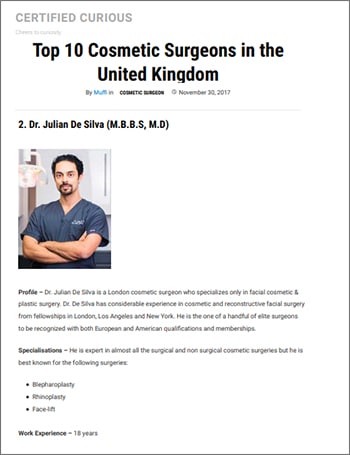About Dr De Silva MBBS, MD
Dr Julian De Silva is a leading facial plastic surgeon who specialises only in surgical and non-surgical facial procedures. Dr De Silva has considerable experience in cosmetic and reconstructive facial surgery from fellowships in London, Los Angeles and New York.
FACIAL SURGERY IN HARLEY STREET
About
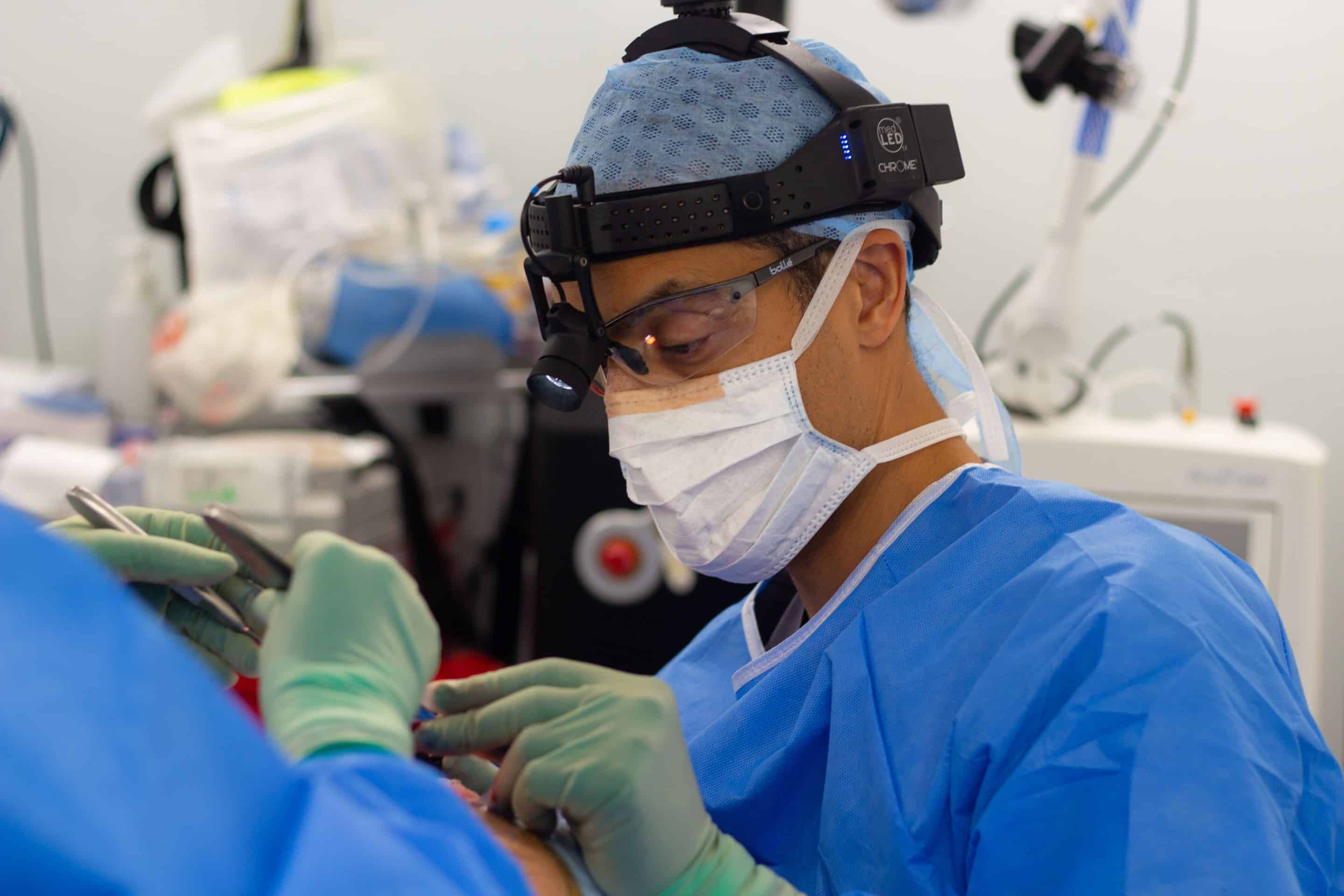
Dr De Silva stands as one of the few elite surgeons acknowledged with British, European, and American qualifications, memberships, and board certification. Through his devoted practice on Harley Street, he has pioneered rapid-recovery and low downtime procedures, ensuring natural-looking results.
Accreditation: Dr. De Silva boasts a formidable record of achievements, including the gold medal for research from the Imperial College and recognition by the Royal Society of Medicine. Moreover, he has significantly contributed to advanced surgical techniques, laser technology, and stitch-less tissue adhesives, disseminating his findings through over 30 peer-reviewed journal articles and book chapters.
Certified by the American College of Surgeons and British Royal College Societies, Dr. De Silva spent over a decade in the National Health Service, including service at St. George’s Hospital, a major referral centre for the local London Hospital community. Currently, he practises in a fully accredited CQC (Care Quality Commission) approved custom-built facility.
Dr. De Silva’s commitment to excellence was evident when he was selected for the London 2012 Olympics to provide clinical care to the participating athletes and coaching staff.

Facelift & Facial Only Treatments
By focusing entirely on only facelift & facial cosmetic surgery procedures, Dr De Silva is able to provide the expertise that can only come with specialisation: facelift and neck lift, blepharoplasty, rhinoplasty and chin implants.
Natural Looking Results
Dr De Silva is a believer in the importance of artistry behind cosmetic results and focuses his skills at delivering natural looking results.
Fast Recovery
Dr De Silva has pioneered the advances in technology to speed up recovery with a combination regenerative medicine techniques, Oxygen and LED Therapy.
World Class Expertise
Dr De Silva also teaches other surgeons internationally and has contributed to the development of advanced surgical techniques, laser technology and stitch-less tissue adhesives.
Overview of Dr De Silva
Training
Dr De Silva was born and raised in London and went to the world-renowned London Teaching Hospital, Guy’s, King’s and St. Thomas’s Medical School, now known as Kings College London. He was always passionate about aesthetics and spent his international elective in plastic surgery at the University of California in 1999. He went onto teaching anatomy at Guy’s Hospital, Neurosurgery at King’s College before accepting an ophthalmic surgery registrar post in London, which at this time was one of the most competitive specialties in medicine and surgery.
Dr De Silva completed ophthalmology specialist training before specialising in Oculo-Facial Plastic surgery. Dr De Silva trained in ophthalmic micro-surgery, where measurements of millimetres are important, and applied this attention to detail to facial plastic surgery procedures. After working in the NHS for more than a decade, he expanded his knowledge and skills in facial plastic surgery in renowned plastic surgery centres in New York and Los Angeles.
Philosophy
Dr De Silva is recognised as an expert on the latest advances in facial cosmetic surgery and has published three books on facial cosmetic surgery and has presented at major international conferences in the US and Europe.
His philosophy focuses on the use of small incision and fast recovery techniques to give natural looking results, and was the only surgeon in a major London Teaching Hospital to obtain skills in the use of minimally invasive and endoscopic technology overseas, that provide the ultimate in small incision surgery eliminating scars and expediting recovery. Dr De Silva’s goal is to help his patients look better and feel better about themselves.
Having worked with celebrities, models, and professionals whose careers hinge on their appearance, Dr De Silva is committed to delivering results that embody enhancement rather than radical transformation.
Face Only
By focusing entirely on only facial cosmetic surgery procedures, Dr De Silva is able to provide the expertise that can only come with specialisation: facelift and neck lift, blepharoplasty, rhinoplasty and chin implants. Dr De Silva believes that procedures on the face should be in accordance with harmony and balance which requires artistic interpretation of beauty. He relies on his education and passion of art and sculpting to offer patients natural results. Facial cosmetic surgery is demanding, each patient requires a meticulous assessment, an informed discussion about healing, recovery and expectations, and customised procedures with attention to intricate detail.
With over 10-years of surgical experience, Dr De Silva believes that he can give you the best possible results not just because of his technical innovations and enthusiasm for success, but also because of his artistic understanding of anatomy, obsession with detail and care of patients.
Honours & Awards
- International Speaker and Surgical
- Trainer in Facial Cosmetic Surgery
- Annually teaches facelift surgery at
- American Academy International Meeting
- Written three books on Facial Plastic Surgery
- Awarding Judge at the Aesthetic Awards from 2015
- Voted best leader by colleagues, Awarded the only Distinction in Masters
- Known for Innovative techniques that deliver Natural Looking Rapid Results
- Nomination for best Cosmetic Surgeon
Fellowship, Membership & Certification
- American Academy of Cosmetic Surgery
- American Board of Facial Cosmetic Surgery
- American College of Surgeons
- American Society of Oculofacial Plastic and Reconstructive Surgery
- British Medical Association
- European Academy of Facial Plastic Surgery
- European Rhinologic Society
- Faculty of Medical Leadership and Management
- General Medical Council (Specialist Register 4644389)
- Royal College of Surgeons of Edinburgh
Past Hospital Affiliations
- Montefiore Medical Center, Albert Einstein College of Medicine, New York
- University of California Los Angeles
- St. Georges Hospital, London
- Moorfields Hospital, London
- University College, London
- Imperial College, London
- University of Leeds, Yorkshire
- University of East Anglia, Norfolk
- Charing Cross Hospital, London
- Chelsea & Westminster Hospital, London
- Great Ormond Street Hospital, London
- King’s College London

ARTISTRY
- Dr Julian De Silva is an Artist
- Some of his paintings can be seen in his office
- 50% of facial surgery is technical detail and mm’s
- The other 50% is artistry


PHILANTHROPY
Dr De Silva he has in the past volunteered his time and contributed to helping less fortunate communities in many areas of the world, including Eastern Europe, Asia, Africa and South America. Dr De Silva set up a charitable organisation that’s mission is to improve education and healthcare for vulnerable children and community. Our principle is to give support to those most in need at ground level, direct to where it is needed.
“With the fortune of living in an industrialised country, there are many aspects of life including education, health and family that we take for granted. We are grateful for our ability to help patients every day achieve their expectations, and our aim is to sponsor as many children as possible with education and healthcare in less fortunate parts of the world.”, Dr Julian De Silva.
SPECIALTY TRAINING & FELLOWSHIPS
CONTINUING MEDICAL EDUCATION, TEACHING & TRAINING COURSES
- AAO & American Society of Oculo-Facial Plastic Surgery, New Orleans 2017
- BOPSS Oucloplastics Conference, London 2017
- Rhinoplasty Conference, Milan 2017
- IMCAS Aesthetics Meeting, Paris 2017
- AAO & American Society of Oculo-Facial Plastic Surgery, Chicago 2016
- European Association of Facial Plastic Surgeons, London 2016
- ACE Aesthetics & Exhibition, London 2016
- Anti-Ageing Conference, Monte Carlo 2015
- BAAPS British Plastic Surgery Meeting, London 2015
- London’s Aesthetics ACE Conference 2015
- FACE conference, London 2014
- Written Rhinoplasty fellowship examination questions for US ASOPRS Examination 2014
- 11th International Symposium of Facial Plastic Surgery, New York 2014
- ACE Aesthetics Conference & Exhibition, London 2014
- European Association of Facial Plastic Surgeons June 2013
- British Association of Aesthetic Plastic Surgeons, London 2013
- 29th Annual Scientific Meeting, American Association of Cosmetic Surgery. Global Innovations & Controversies in Cosmetic Surgery, Las Vegas 2013
- Cosmetic Surgery Review Course, Las Vegas 2013
- American Association of Oculo Facial Plastic and Reconstructive surgery Annual Meeting, Trainer on Course for facelift and rhinoplasty surgery. Chicago 2012
- Vegas Cosmetic Surgery: Rhinoplasty, Face and Neck lifts, Blepharoplasty. International Multi-Speciality Symposium, Las Vegas 2012
- Advances in Facial Reconstruction & Cosmetic Surgery: Hands-on Cadaver Workshop. Mount Sinai School of Medicine, New York 2012
- Dallas Cosmetic Surgery Symposium. Emerging Role of Fat in Facial Surgery. Southwestern Medical Centre, Dallas 2012
- Dallas Rhinoplasty Symposium. Advances & Controversies in Rhinoplasty. Southwestern Medical Centre, Dallas 2012
- Leadership in Healthcare. Dr De Silva pioneered the development of an innovative new training programme for young surgeons in leadership skills and the development of high-quality medical care. 2010
- Surgeon re-validation. Dr De Silva was selected to contribute to question writing for the General Medical Council Revalidation of Surgeons programme.
- The London Eye Course. Dr De Silva co-established a new training course for young surgeons beginning work in busy London Teaching Hospitals. The course had incredible feedback and was repeated for subsequent years, 2008-2010.
- Workshop in Clinical Leadership. Dr De Silva held a workshop on leadership skills for the UK Association for the Study of Medical Education 2010
- Training the Trainers Course. Teaching Skills, Feedback & Appraisal, RCO, London 2010
- Endoscopic Brow Elevation. AAO. Chicago 2010
- Training the Trainers Course. RCO, London 2010
- Reconstructive Surgical Skills. Cadaver Dissection. Royal College of Surgeons. London 2010
- Training the Trainers Course. RCO, London 2010
- Darzi Fellowship Leadership Programme, London. 2009-2010
- Facial Reconstruction & 7th nerve palsy 2010
- Rejuvenation of Eyelids & Forehead, Royal College of Surgeons, London 2010
- OculoFacial Plastic Surgical Skills, AAO, San Francisco 2009
- Cosmetic Blepharoplasty, AAO, San Francisco 2009
- Endoscopic transnasal lacrimal surgery, AAO, San Francisco 2009
- Endoscopic forehead and eyebrow lift , AAO San Francisco 2009
- Face and neck lifting, AAO, San Francisco 2009
- Management & Team building, Imperial College London 2008
- Facial rejuvenation, London 2008
- Leadership, Imperial College London 2008
- Ptosis Evaluation, New Orleans 2007
World Class Facial Cosmetic and Plastic Surgery
Schedule a Consultation
When you have satisfied yourself regarding the above criteria, the next step is to meet face-to-face with the surgeon you are considering to pursue surgery with. Nothing can replace a face-to-face meeting with the surgeon themselves. The key to a good result is the artistry of the individual surgeon because no two faces are identical. Caution is advised in high street providers in which you are unable to meet the surgeon before the day of surgery as usually this means the surgeon is a mass market provider and may not be available after the surgery. More than one surgeon may ‘meet’ the qualifications but the focus should be that you feel comfortable with your surgeon and agree with their style. Excellent communication between you and your surgeon should be the main factor of your overall decision.
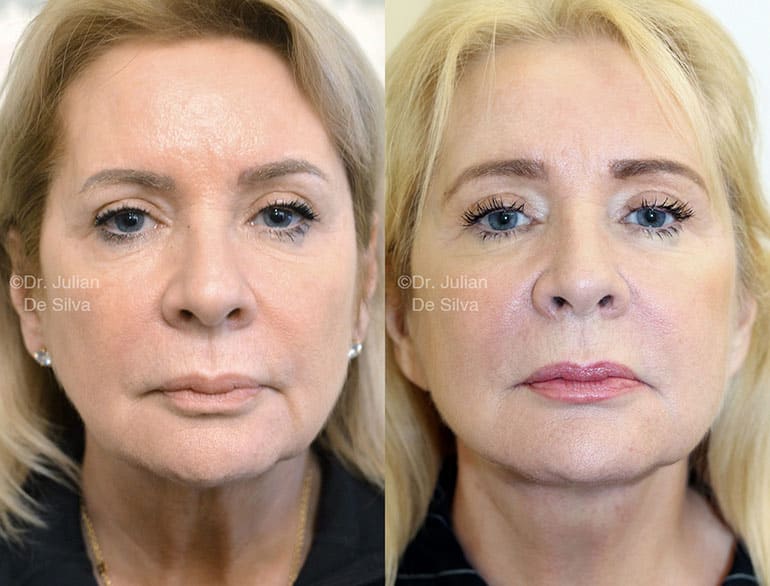
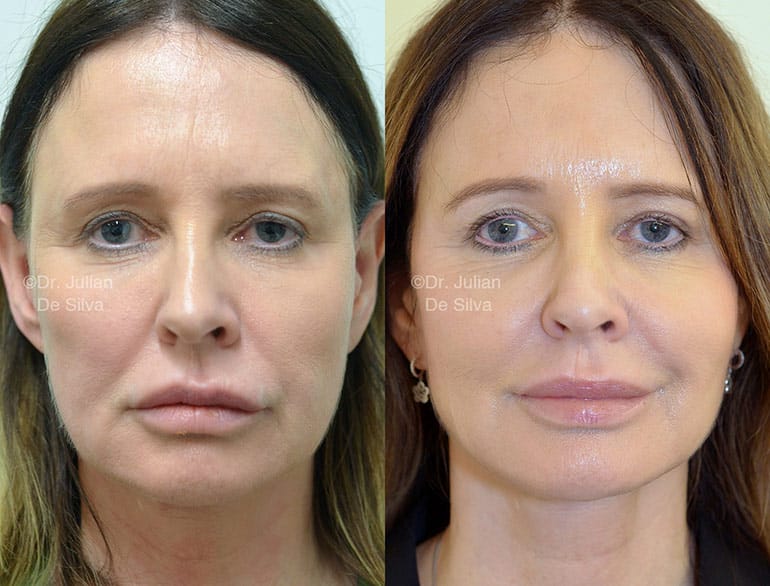
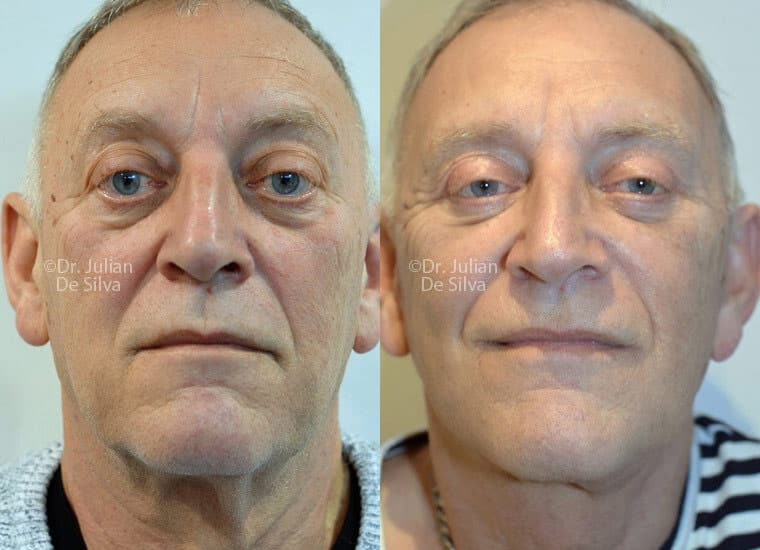
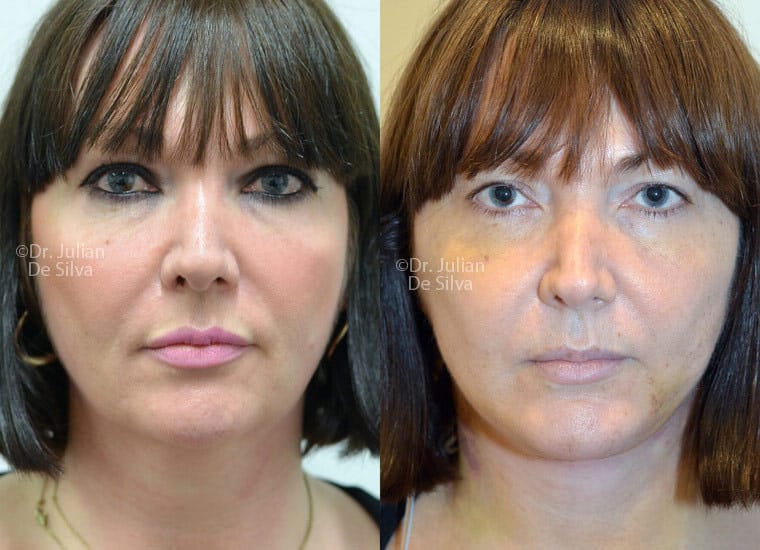
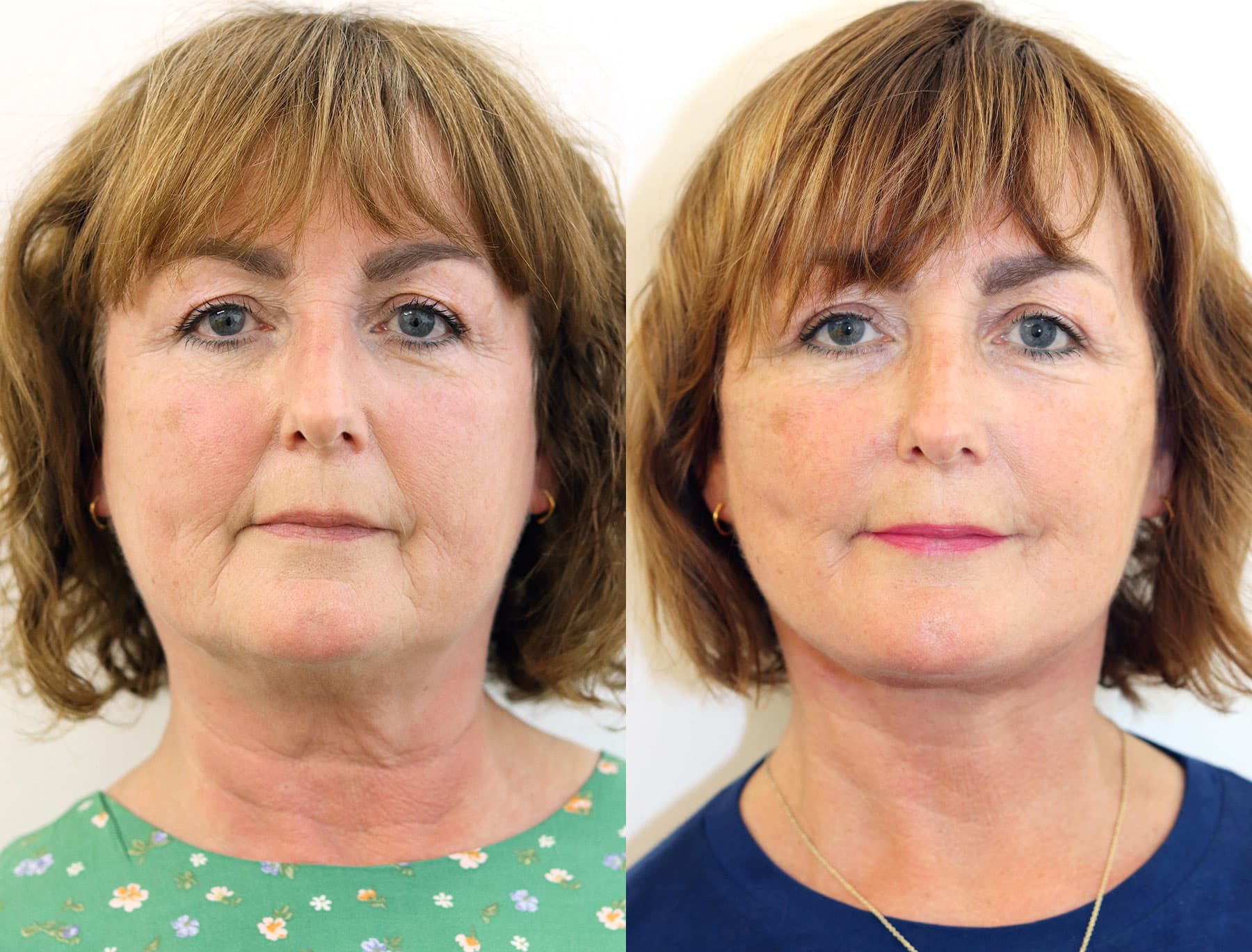
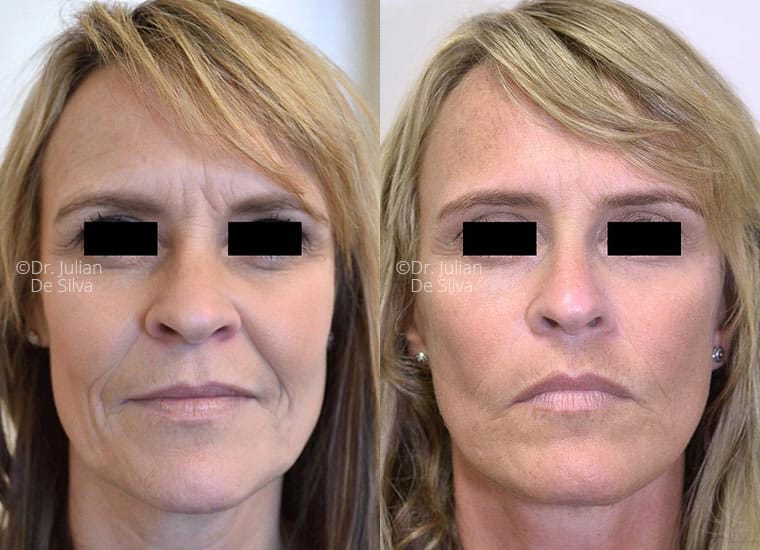
TESTIMONIAL
What our satisfied clients are saying
“I am currently in Dhaka, and I am healing very well. I am extremely happy with the results and it looks so natural that everyone says I look much fresher but no one can put a finger on the reason why. I just wanted to thank you again, and also ask if I can resume taking my Vitamin E and Omega 3 supplements.
Thanks you so much!”
About Dr Julian De Silva
Finding the most reputable facelift expert is never easy. Therefore, you should always research the best surgeons in your area and ask plenty of questions. Dr De Silva is a facial cosmetic surgeon, author, educator, with a track record of doing procedures for top celebrities. He is based at world-renowned Harley Street in Central London and specialises in three main procedures: Face and Neck lifts, Blepharoplasty, and Rhinoplasty.
Come witness a custom-built surgical centre that is not your average hospital. You are guaranteed to experience natural-looking results and fast healing thanks to growth factors, oxygen therapy, and state of the art technology.
By specialising in only the face, you can rest assured knowing that you’re getting premier results. Dr De Silva achieves natural-looking results for his patients using the latest technology, so they can heal quickly and look their absolute best. No matter what your reason for wanting a cosmetic treatment is, Dr De Silva and his team are here to help. To find out more information about Dr De Silva and his work, check out our website.
Contact Details
Call: 020 8748 2860
Email: info@drjuliandesilva.co.uk
Address:
23 Harley Street
London, W1G 9QN, UK
Dr Julian De Silva
5 stars based on 458 reviews

Renowned expert in Facelift/Facial Cosmetic and Plastic Surgery. Signature techniques in Blepharoplasty, Rhinoplasty and Facelift surgery. Expert in revision surgery and in natural looking results


